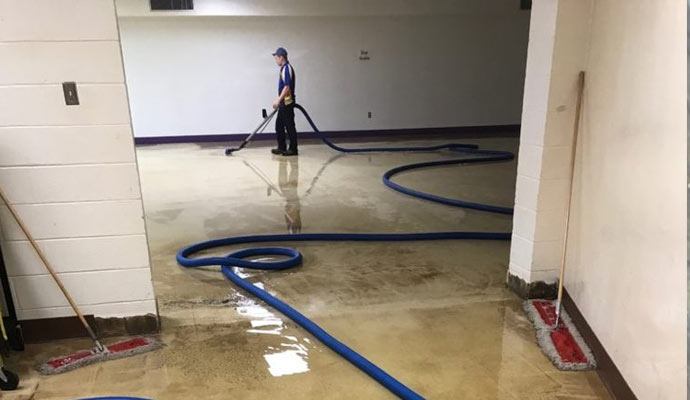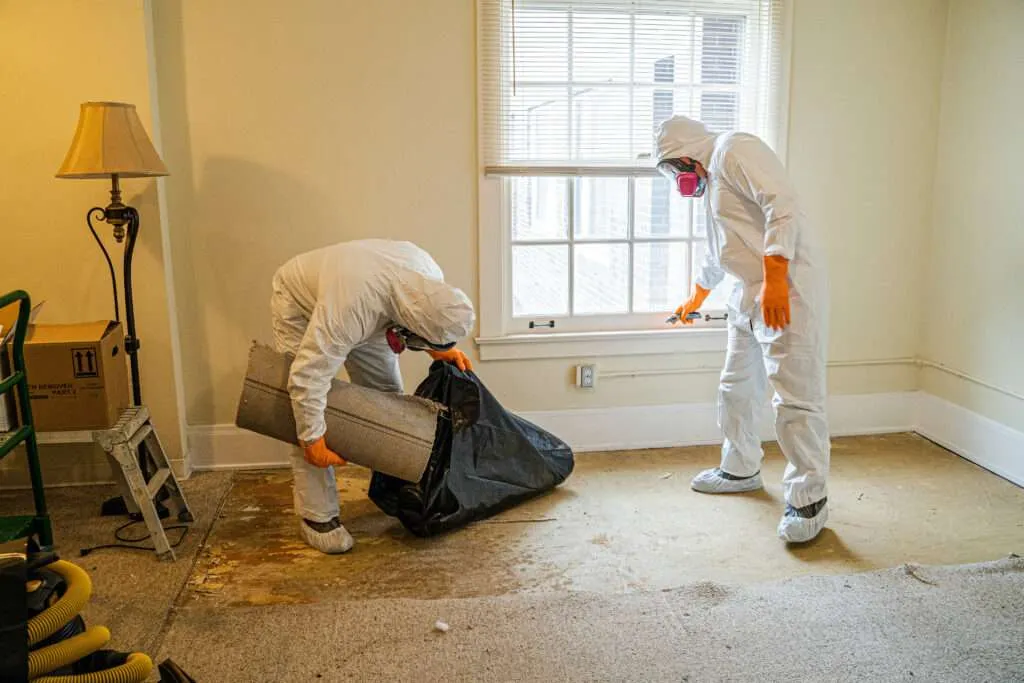A practical overview to Water Damage Restoration processes
Water Damage Restoration 101: Understanding the Process and Expense
Water damage can strike unexpectedly, leaving house owners in a state of confusion. Recognizing the remediation process is necessary for reliable recuperation. From reviewing the damage to choosing the appropriate service copyright, each action affects the total outcome and expense. Factors such as the sort of water damage and seriousness additionally play a significant function. What are the details methods made use of in restoration, and how can one prepare for possible costs?
Sorts Of Water Damage

Preliminary Evaluation and Examination
Water Removal Techniques
Complying with the first assessment, effective water removal methods are employed to reduce damage and protect against further issues. These strategies involve making use of specific equipment such as submersible pumps and industrial-grade vacuums - Water Damage Restoration. The option of technique relies on the quantity of water present and the kind of products affected. For standing water, completely submersible pumps are generally made use of for fast elimination, while vacuum cleaners are optimal for extracting water from carpetings and upholstery. Additionally, advanced techniques like water removal floor coverings may be employed for hard-to-reach areas - Flood Cleanup Services. The objective is to remove as much water as possible, reducing the capacity for mold and mildew development and architectural damage. Motivate and efficient water extraction is necessary in the total water damage reconstruction process
Drying Out and Dehumidification Process
Once the water removal is total, the drying out and dehumidification process becomes vital to restoring the afflicted area. This stage commonly employs industrial-grade dehumidifiers and air moving companies to successfully minimize dampness levels. The dehumidifiers pull in damp air, getting rid of excess humidity, while air movers distribute air to increase dissipation. Tracking equipment is frequently utilized to track humidity and temperature degrees, making sure perfect drying out problems. The period of this procedure can vary depending upon the level of the water damage and environmental elements. It is vital to extensively dry all impacted products, consisting of wall surfaces, floor covering, and home furnishings, to stop mold development and structural damage. Appropriate implementation of this action is essential for an effective repair outcome.
Cleaning Up and Disinfecting Affected Locations
A thorough initial assessment and evaluation of affected locations is essential to recognize contamination levels as soon as the drying out process is complete. Flood Cleanup Services. Effective cleaning strategies and proper products must after that be used to eliminate particles and stains. Sanitization and disinfection methods are necessary to assure that damaging pathogens are removed, bring back the space to a risk-free condition.
First Evaluation and Inspection
Prior to beginning any type of repair efforts, a comprehensive first evaluation and inspection of the impacted locations are vital for efficient cleaning and sanitizing. This procedure entails recognizing the extent of water damage, figuring out the source of the water breach, and examining the products impacted. Assessors usually try to find indicators of mold and mildew development, architectural stability concerns, and damaged belongings. The evaluation likewise includes inspecting wetness levels using customized devices to assure no covert water pockets stay, as these can bring about further issues. Documenting the findings is crucial for planning the next action in the repair process. An in-depth first evaluation allows reconstruction professionals to develop a targeted technique for reliable cleaning and sanitizing, eventually lessening damage and wellness risks.
Cleaning Up Techniques and Products
Effective cleaning and sterilizing of water-damaged areas require a selection of methods and items tailored to the details products affected. For porous surfaces like drywall and carpets, extraction methods are important to eliminate excess moisture, followed by deep cleaning with specialized cleaning agents. Non-porous materials such as ceramic tile or metal can be cleaned using commercial-grade cleansers that successfully eliminate pollutants. Steam cleaning is an additional efficient strategy, particularly for carpetings and upholstery, as it makes use of heats to get rid of germs and mold (Flood Cleanup Services). Furthermore, green products are significantly popular for their safety and security and efficacy - Water Extraction And Drying. Inevitably, selecting the suitable cleaning methods and items not just ensures instant cleanliness but additionally help in protecting against more damage and health and wellness threats linked with water invasion
Sanitization and Disinfection Methods
When resolving water damage, proper sanitization and disinfection techniques are vital to assure the safety and health of the afflicted setting. After preliminary cleansing, surface areas should be treated with ideal disinfectants to remove pathogens, mold and mildew, and bacteria that flourish in wet conditions. Typical approaches include using EPA-approved chemical disinfectants, which can be applied with splashing or cleaning methods. In addition, ultraviolet (UV) light systems can efficiently disinfect areas by counteracting microorganisms without extreme chemicals. The choice of technique usually depends on the kind of products affected and the degree of contamination. Inevitably, extensive sanitization not just recovers a safe living area but likewise assists stop future wellness risks connected with lingering wetness and mold and mildew development.

Fixings and Restoration Options
Reviewing the damage brought on by water direct exposure is crucial for establishing the appropriate repairs and remediation choices. Property owners may deal with numerous concerns, consisting of damaged drywall, warped flooring, and endangered structural elements. Depending on the level of the damage, fixings might include replacing sections of drywall, installing brand-new flooring, or strengthening architectural beam of lights. In situations of serious damage, full replacement of damaged materials could be essential. Furthermore, professional conservators frequently recommend using moisture meters to assess surprise dampness degrees before selecting the most effective course of activity. It is very important to act promptly to avoid mold and mildew development and further wear and tear. Choosing the appropriate choices not only restores the residential or commercial property but likewise assures long-term safety and security and functionality.
Variables Influencing Restoration Prices

The degree of water damage straight influences the restoration costs house owners can expect to incur. Variables such as the resource of the water, the duration of exposure, and the damaged materials significantly affect rates. Tidy water damage from a broken pipe is usually less costly to recover contrasted to damage created by sewer. Additionally, the degree of contamination determines the demand for specialized cleaning and disposal services, further enhancing expenses. Geographical area additionally contributes, as local labor prices and schedule of reconstruction solutions can vary. The urgency of the reaction affects costs; quicker interventions generally lead to reduce general costs by stopping additional damage. Comprehending these aspects is crucial for house owners when approximating repair expenses.
The three primary kinds of water damage are classified based on contamination degrees: clean water, gray water, and black water. A complete preliminary evaluation and inspection are vital actions Website in the water damage remediation procedure. For standing water, completely submersible pumps are usually utilized for quick removal, while vacuum cleaners are optimal for extracting water from rugs and upholstery. The extent of water damage straight affects the restoration sets you back house owners can expect to sustain. Clean water damage from a broken pipeline is normally less pricey to restore compared to damage created by sewer.